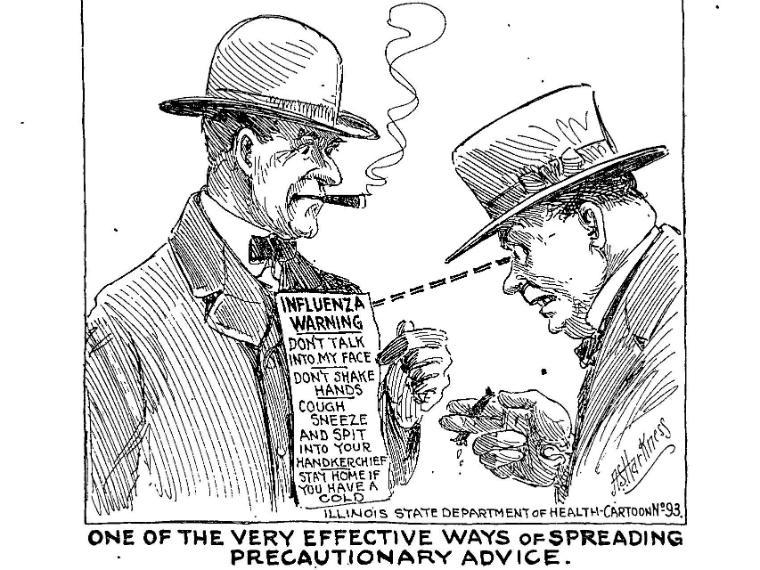
A hundred years ago, the Spanish flu spread throughout the world, killing an estimated 50 million to 100 million people. It arrived in Chicago by September 1918 and killed 8,510 people in the city in just two months. According to health reports, from September 21, 1918, to November 16, 1918, 37,921 cases of influenza and 13,109 cases of pneumonia were reported. This information and much more is included in A Report on An Epidemic of Influenza in the City of Chicago in the Fall of 1918.
Chicago was not as badly hit as some other cities, thanks to certain precautions. For example, Commissioner of Health Dr. John Dill Robertson made influenza a reportable disease on September 16, and the Health Department printed placards to educate the public about the dangers of spitting, coughing and sneezing, and urged people to stay home if they were sick (still good advice today!).
Additional efforts included limiting crowds by closing theaters, dance halls, skating rinks and other venues, and prohibiting public funerals. Controversially, schools remained open, but ultimately the Health Department decided children would be better off in school, where they could be monitored by teachers and nursing staff for signs of infection, rather than at home and/or unsupervised. On October 13, smoking on street and elevated railroad cars was prohibited, and this order remained in force even after the Spanish flu had passed.
For an in-depth analysis of how Chicago dealt with the epidemic, see The Politics of Public Health in Chicago, 1850-1930.


Add a comment to: Chicago Fought to Limit Flu’s Spread During 1918 Epidemic